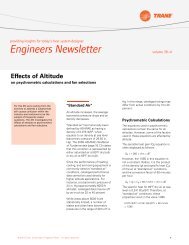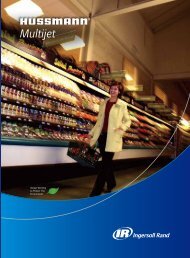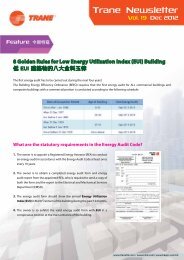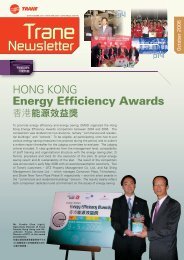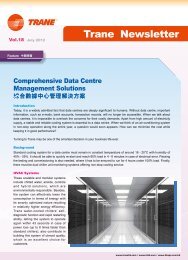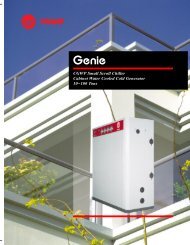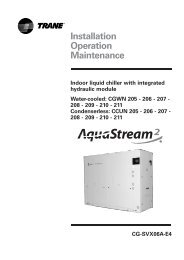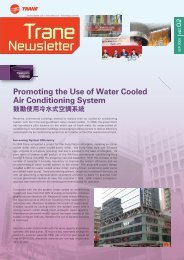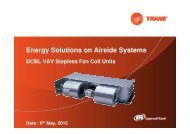IOM Manual
IOM Manual
IOM Manual
Create successful ePaper yourself
Turn your PDF publications into a flip-book with our unique Google optimized e-Paper software.
TRANE ®<br />
System Refrigerant<br />
Charging Procedures<br />
Unit Evacuation<br />
1. Evacuate the unit after leakage test.<br />
2. Attach appropriate hoses from<br />
manifold gauge to suction and liquid line<br />
charging port (See Figure 11).<br />
Refrigerant Line Insulation<br />
and Isolation<br />
Insulate the suction line and refrigerant<br />
tubes together, and also insulate liquid<br />
lines exposed on extreme temperatura.<br />
Insulate liquid and suction line<br />
separately and isolate them from each<br />
other. Isolate all refrigerant tubes from<br />
the structures and air ducts.<br />
Note: Isolate the refrigerant tubes from<br />
the building to avoid possible noise and<br />
vibration.<br />
Figure 11<br />
Note: Unnecessary switching of hoses<br />
can be avoided and complete<br />
evacuation of all lines leading to sealed<br />
system can be accomplished with<br />
manifold center hose and connecting<br />
branch hose to a cylinder of refrigerant<br />
and vacuum pump.<br />
Figure 12<br />
3. Connect the center hose of manifold<br />
gauge to a vacuum pump.<br />
4. Evacuate the unit to hold a 46Pa<br />
vacuum.<br />
5. Close the valve to the vacuum pump<br />
and observe the gauge. If gauge<br />
pressure rises above 66Pa within a<br />
minute, it indicates that the vacuum<br />
is not completed or the system has a<br />
leak.<br />
6. If the gauge pressure does not rise<br />
above 66Pa within a minute, it<br />
indicates that the vacuum is<br />
completed.<br />
19




